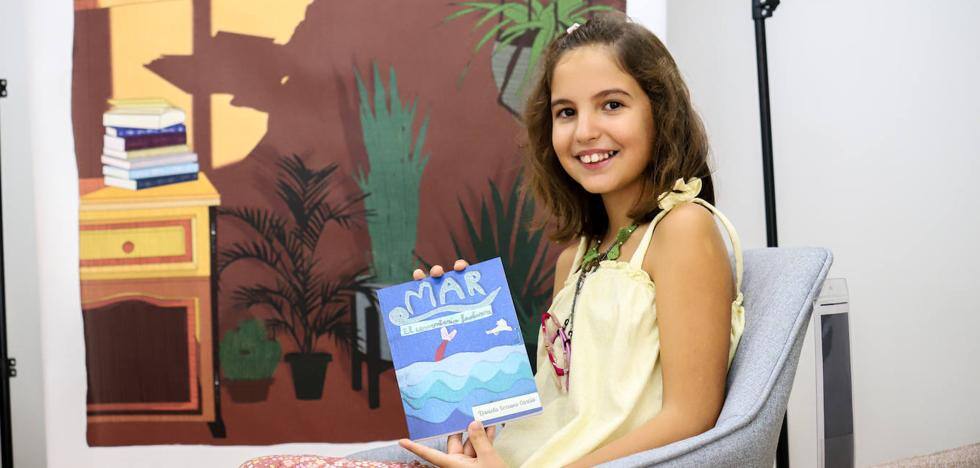Víctor Villegas’ regional auditorium is decked out to return to London of the second half of the 18th century, a musical transition period between Baroque and Classicism, in which the society, shaped by two notable composers, stood out, the harpsichordist Johann Christian Bach and the viola player Carl Friedrich Abel.
These musicians organized musical gatherings to which the public subscribed and in which gallant music was played, characterized by the contrast of feelings and emotions in which the performers and the listeners participated in a relaxed manner.
The Narciso Yepes hall opens its doors for the first time to Anachronía, an early music quintet specializing in period instruments and recreating this special London atmosphere. Composed by Luis Manuel Vicente (Baroque viola), David Gutiérrez (Baroque traverso), Marina López (harpsichord), Pablo Albarracín (Baroque violin) and Marc de la Linde (viola da gamba), the term “anachronism” (which does not correspond to its time) ties in with the moments in music history when different styles, languages and instruments coexisted, as happened in the transition between baroque and classicism.
One of the most important aspects of the second half of the 18th century is the type of language of the gallant style, which inherits the chiaroscuro emotional contrasts of the Baroque, combined with the richness of different sensibilities that the compositions radiate, such as the members of Explain Anacronia.
Traditionally, these works have been interpreted in a very restrained way in search of an affection of courtly elegance and what Anacronía intends is to amplify their emotions, sounds and contrasts in a bold and interactive way so that the audience can imagine the different characters to introduce. in them and related to the world of Commedia dell’arte and opera.
The program presented by Anacronía during its premiere in the capital of Murcia reproduces London musical encounters with works written between 1767 and 1776, such as the Flute Quartet in C major WB 58 by Johann Christian Bach, the Flute Quartet in D major WK 226 by Carl Friedrich Abel, the Trio for two violins and bass by Juan Oliver Astorga from Murcia, the Divertimento in G major H. 642 by Carl Philipp Emanuel Bach and the Flute Quartet in D major, opus 5 by Franz Joseph Haydn.
This early music quintet feels very comfortable interpreting this repertoire as they approach it in a spontaneous, dramatic and affective way, exploring the most extreme nuances from a musical and visual point of view. The constant changes of mood and decoration even vary from concert to concert, because despite playing it by heart and playing in a semicircular formation, there is room for improvisation with casual entrances from each of them, with the audience playing it. creating its own story.
Anacronía’s business card includes performances at the ECOS Sierra Espuña International Festival, at the San Sebastián Musical Fortnight, at the Santander International Festival, Bachelona Festival, at the Estella-Lizarra Early Music Festival, at the Iberian Resonance of Jaén, at the Misteria Paschalia Festival in Krakow (Poland), in the International Youth Artist Presentation program of the AMUZ in Antwerp and in the Fringe of the Early Music Festival in Utrecht, among others.
For Anacronía, it is very important that the public enjoy and have fun with musical jokes from the 18th century, as they are still valid today, arousing the same feelings and affections of the past.
People attending the concert will experience many emotions. With the elegance of Johann Christian Bach, they move into a courteous and pleasant environment where there will be no shortage of tragic turns. Pay special attention to the second verse of the second movement of the Quartet in C major, where the lamentation of the violin is answered energetically and heroically by the viola, followed by a flute cadence that releases all tension and brings us back to the main subject.
Abel’s quartet has a more pronounced brilliance with restrained energy until the flute joins in, releasing a series of small motifs scattered across the rest of the music stands. The second part is an ode to nature where the relaxation of the pastoral atmosphere is experienced.
Yeclano Astorga’s work is most closely associated with comic opera through the combination of pauses, glissands and other unexpected elements. On the other hand, Carl Philipp Emanuel Bach’s Divertimento reveals his fascinating inner world of juxtaposed ideas. In fact, the first and third movements contain moments where suppressed laughter and exaggerated laughter alternate, while the second is a melancholic flute solo in which the central movement opens to hope but does not free us from the general sadness.
The quartet of a young Haydn picks up on the legacy of the literary movement Sturm un Drang with a first movement full of very fast strong contrasts between very different characters who enter into a dialogue with vivacity, a second movement which is a love speech between the violin and the flute and a third where affection is fun with a spectacular and excited finale.
In summary, we will attend a program full of emotions and games, not always obvious, in which Anachrony will express itself with the intensity and complicity necessary for the audience to understand and enjoy them.
Source: La Verdad
I’m Wayne Wickman, a professional journalist and author for Today Times Live. My specialty is covering global news and current events, offering readers a unique perspective on the world’s most pressing issues. I’m passionate about storytelling and helping people stay informed on the goings-on of our planet.



